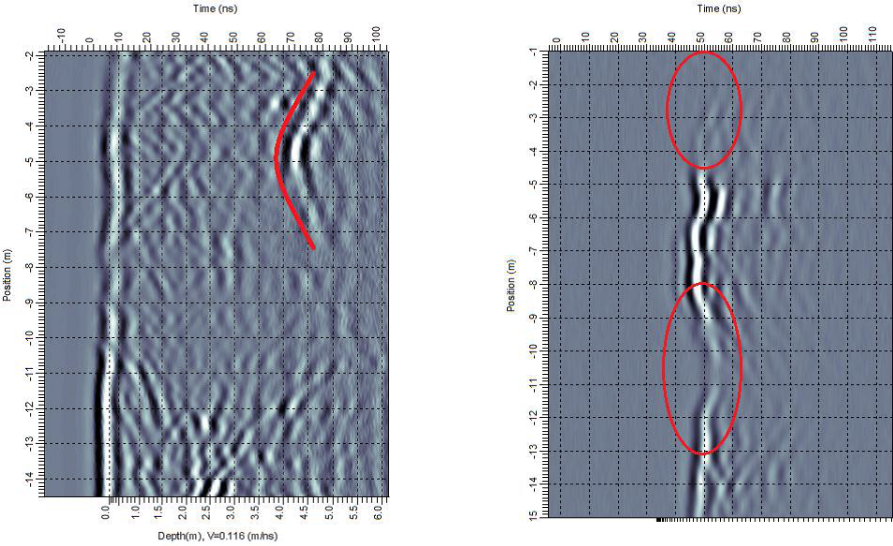 A sinkhole of unknown origin was initially detected at the exit of a parking lot adjacent to an office building. The sinkhole was filled and the parking lot resurfaced. Two months later the surface of the parking lot collapsed again. The second sinkhole was larger than the first, measuring 5 to 6 meters in depth. The parking garage has two levels and there was an immediate safety concern. There had never been any problems in the twenty year history at this business location. An immediate investigation to locate the origin of the sinkhole was conducted.
A sinkhole of unknown origin was initially detected at the exit of a parking lot adjacent to an office building. The sinkhole was filled and the parking lot resurfaced. Two months later the surface of the parking lot collapsed again. The second sinkhole was larger than the first, measuring 5 to 6 meters in depth. The parking garage has two levels and there was an immediate safety concern. There had never been any problems in the twenty year history at this business location. An immediate investigation to locate the origin of the sinkhole was conducted.